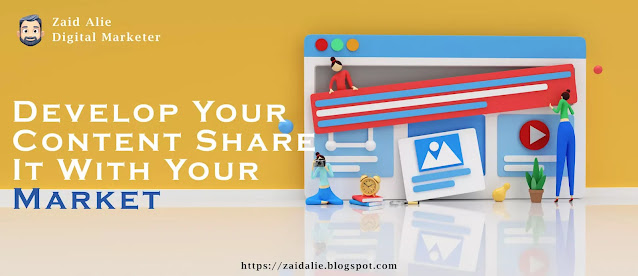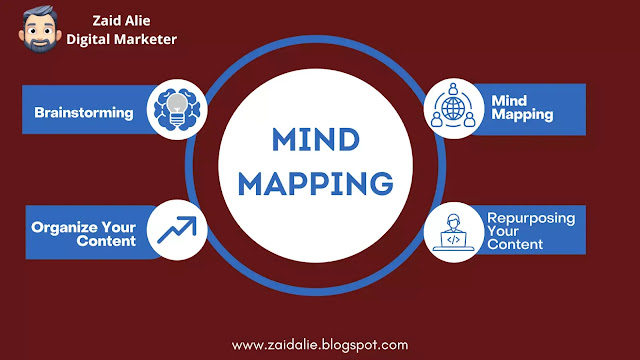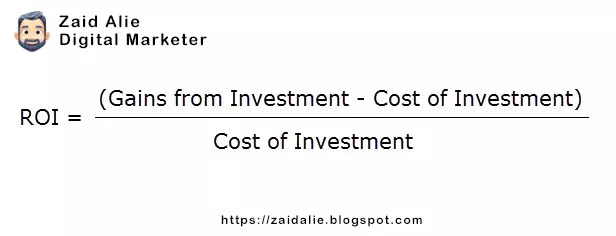Once you know how to use mind mapping for content creation, mental blocks will never halt your creative process again. With these tips, you'll pump out quality content that will drive traffic to your site and turn readers into loyal customers.
We partnered up with my perfect content partner, Buffer, and created a killer content marketing for a small business template you can use to jumpstart your blog.
How to Craft a Small Business Content Marketing Strategy in 7 Steps by @JuliaEMcCoy
5 Easiest Creative Ways to Content Marketing for Your Small Businesses:
Content marketing for small businesses is an efficient, effective, and economical way to drive traffic to your site. According to the manifest, companies now use it to attract and retain customers. Here are seven steps to creating a small business content marketing strategy that works.
Content marketing for small businesses by Zaid Alie can be very effective when done correctly; if you want to know how then read on! This article will give you five creative tips to help your small business succeed in content marketing. After reading through these guidelines, hopefully, you'll be able to create great and engaging content that will drive traffic back home and turn your readers into loyal customers.
1. Decide on Your Mission or Objectives:
The first step in any content marketing strategy is to decide your overall mission or objectives. It will help you determine the audience you should write for and which topics and trends are most relevant to your business. Once you have figured out what you want to achieve, the next step is creating a content strategy.
Content marketing must have a clear objective and fulfill that objective. Ensure your objectives are time-bound, relevant, quantifiable, reachable, and explicit. In other words, develop them via the SMART technique and the goals appear as follows;
- Specific: Specify the goal in detail. What are you hoping to achieve by writing this content? How will your readers know that you've earned it?
- Measurable: Can you track whether or not you have achieved the goal? Will this piece of content lead to a demonstrable result (for example, an increase in traffic or leads)?
- Achievable: Is it something that it can realistically accomplish within a specified timeframe and budget constraints?
- Relevant: Does your target audience care about what's being said here, and is it likely to help them achieve their objectives?
- Timely: Timeframe with a clearly defined and including a start and end date. The SMART goal is to create a sense of urgency.
2. Select Your Audience:
A carefully defined audience is essential to effective content marketing. You're not aiming to connect with everyone and everybody. You are developing a valuable message to a particular market sector made up of people who are most likely to buy your product or service. There are many ways to select your
target audience. One way is to use demographic data from your industry or other sources that can give you an idea of who is likely to be interested in what you have to say.
You could also create a survey and ask respondents about their interests, needs, and buying habits. You may want to develop specific content for certain audiences, such as blog followers who live in a particular region or subscribe on behalf of a group (for example, medical professionals). Once you have identified the right audience for your messages, understanding is essential.
3. Identify Your Performance Indicators:
Once you have a target audience and know what they want, it's essential to figure out how to measure your success. Thus, it can involve tracking things like website traffic or leads generated by content. It would help if you also considered ways to track engagement with the content, such as comments or shares on social media. This information will help you identify which messages are resonating with your audience and whether there are areas where further refinement is necessary.

4. Plan Your Content Strategy:
Once you have selected what content to produce and identified performance indicators, it's time to plan the strategy for creating that content. Many tools and resources are available to help you with this, such as
Google AdWords or content marketing software. To produce valuable content that will engage your audience, you'll need to understand the persuasive techniques used in marketing. It includes
april google update understanding how to create emotional connections with readers and developing the skills necessary for persuasion (such as basic copywriting). Once you've made a strategy and started producing content, it's crucial to monitor its success. Thus, it can involve tracking website traffic or leads generated by content.

5. Develop Your Content and Share It With Your Market:
Once you have a strategy and some content, it's time to share it with your market. Thus, it can involve promoting the
content on social media or through email campaigns. It's also essential to ensure the message is delivered engagingly, using compelling graphics and imaging.
Once you've created a marketing plan and shared valuable content with your target audience, be prepared for some resistance! Some people may not want to change their habits or adopt new strategies by persistently delivering valuable content. It's important to remember that content marketing isn't just about producing more content; it's also about promoting it effectively. It means creating compelling headlines, crafting valuable descriptions, and targeting your audience specifically (using
keyword research).
ROI of Small Business Content Marketing Strategy:
One of the most important factors to consider when developing a content marketing strategy for small businesses is the return on investment (ROI). Thus, it can involve calculating the amount of traffic your content has generated, leads by your website, or sales resulting from promoted content. It's also important to track whether people are converting from viewing your content to taking action (such as signing up for a newsletter or making a purchase).
Read this blog for a better idea of small business return on investment ROI by content;
1. Measuring the Performance of the Content ROI:
Most web admins track the number of conversions (people who sign up for your newsletter) that their content generates when calculating the ROI of the performance of such content on their websites. But it can use several different methods to measure the performance of your content marketing strategy. One popular approach is to track website visits and leads generated by
email campaigns or social media followers. It's also important to note whether people are taking action from viewing your content (such as converting page views to purchases).
2. Promoting Content to Increase ROI:
Once you have a good idea of the amount of traffic your content generates and whether people are converting from viewing it, one way to increase its ROI is to promote it more effectively. It means targeting your audience with relevant keywords and creating compelling headlines to draw in readers. You should also ensure that your descriptions are clear and helpful
google update April, so potential customers can understand what they're getting into when reading your content.
3. ROI of an Email Marketing Campaign Measurement:
People analyze the investment they made based on the average lead acquisition cost and the other costs that support the email marketing campaign when tracking the
ROI of an email marketing campaign. Email marketing is one of the most effective ways to promote your content. But unless you measure the performance of your email campaigns, you won't be able to determine whether they're generating any results. One way to track this is by using opt-in forms in your emails or tracking which keywords are driving traffic from your emails and converting it into leads (people who have signed up to receive future email updates).
4. Social Media Channels' Return on Investment (ROI):
Most businesses mention the costs of their content creation, distribution, and advertising when tracking the ROI of social media and
digital marketing. Some of the most common social media channels are Twitter, LinkedIn, and Facebook. All three have different return on investment parameters that businesses must consider when assessing their potential value. For example, LinkedIn is considered more valuable for
B2B companies because it has a higher rate of contact closure (meaning people who connect with your company through LinkedIn tend to be interested in working with you).
Let's move further;
11 Pro Tips for Content Marketing Advance Strategy for Small Businesses:
Content marketing through content is crucial for small businesses. It aids in your goal-achieving and audience expansion by
Zaid Alie Digital. Content marketing involves producing and disseminating pertinent, quality content to attract, acquire, and engage a clearly defined audience and motivate lucrative consumer action. Your chances of success increase as you produce more material.
Here are the 11 pro tips for developing a clever content marketing advance strategy for small businesses in the 2022 era:
1. Content Success Evaluation:
Before producing content, it's crucial to analyze your current marketing efforts and determine where you could use help. You can use a tool like Google Analytics or Mix panel to track your site's traffic, how long people stay on it, what keywords people are typing into the search bar, etc.
This step involves planning your content calendar and creating a strategy for producing the most influential pieces of small content marketing. Additionally, they spell out every aspect of what the business will do in the future, although they could change or be evaluated as the market changes.
However, there is significant marketing competition currently on the internet. Consequently, you are aware of the current content marketing strategy used in the sector; therefore, it is crucial to identify prospective areas for exploitation and improvement.
2. Ensure Content Represents Your Brand:
People can distinguish your business or goods due to branding. Consistent brand alignment across channels makes it easier for customers to recognize and become comfortable with your brand. Your business's content must accurately reflect the message you want to communicate. Your writing quality, use of keywords and citations, and images should be on point. Concentrating on your brand's alignment can increase recognition, build authority, and produce income.
Here's how to maintain your brand's consistency throughout the marketing funnel and across your marketing channels. Your target audience is one of the most important aspects to consider when writing content. When you know who you're writing for, it will be easier to produce engaging and exciting pieces that are relevant to them. By understanding your customer base, you can tailor your messaging and ensure all content is correctly optimized for
search engine visibility and reader engagement.
3. Understand the Power of Existing Customers:
The secret to providing excellent service is to recognize their existing customer power. You need to fulfill your promises if you want to provide outstanding customer service. But providing excellent customer service requires getting to know your clients so well that you can foresee their needs and go above and beyond what they expect.
The same goes for content marketing. By understanding your target audience, you can see what topics would interest you and produce engaging pieces that will keep them coming back. In addition to customer profiles, it's also essential to know which channels your customers use most often (
search engine marketing, social media, email). It will allow you to create content specifically for those platforms and tap into a larger audience without spending as much time creating each piece individually.
There are three critical methods for improving your consumer understanding. One is to put yourself in their position and attempt to view your company from their perspective. And the second method is to gather and analyze data using a
customer relationship management (CRM) system. The third method is to inquire as to their opinions merely.
4. Promote Your Content on Social Media Platforms:
Social media platforms are where your target audience spends lots of time and communicates with each other. Posting content on social media is an effective way to get your message out there and connect with people who share the same interests as you. Additionally, social media allows you to create a community around your brand, which can be a boost for your business.
Several social media platforms include Facebook, Twitter, Instagram, and more. Each has a different function and set of features. Find the one that's right for your business and start posting content! Social media marketing is a type of digital marketing by Zaid Alie that uses the strength of well-known social media platforms to meet your branding and marketing objectives. A dynamic approach with quantifiable objectives is needed for social media marketing and includes:
- Preserve and improve your profiles.
- Posting content that promotes your company and draws in the right audience, such as images, videos, stories, articles/blogs, and live videos.
- Responding to comments, shares, and likes and monitoring your reputation.
- To create a brand community, follow and interact with your followers, clients, and influencers.
5. Utilize Specific Keywords In Your Content:
The best way to maximize the reach of your content is to clearly and specifically describe the topic of your piece. It's crucial to ensure that you understand the proper keyword usage strategies to increase the chance that your content will be found, indexed, and ranked by search engines, which use keywords as a starting point for filtering results.
It will help searchers find what they are looking for and do reading and engaging with your content more accessible. When writing, include specific keywords in your content that describe the topic or area you want to cover. It can use these keywords in search engine optimization (SEO) by Zaid Alie efforts to boost the visibility of your content.
In addition, when people share your post on social media, these keywords become part of their metadata, which can also increase the visibility of those posts. By including this metadata, you can see a return on your time spent creating content.
6. Reuse your Headlines Content Marketing Strategy:
Reusing your content marketing strategy is a great way to save time and money. It also allows you to create more engaging content for your audience. By reusing your headlines, you can combine the best elements from each post into one cohesive message. This type of content is more likely to attract readers.
Furthermore, it will improve your SEO ranking. Reusing your content strategy allows you to load up on valuable insights before embarking on the next campaign. You can also use these insights to create new content that better fits your audience's needs. Finally, using recycled content headlines can save time while ensuring that you are producing high-quality content optimized for search engines.
"Repurposing content is one of those content marketing strategies that everyone should be doing, but most people forget."
7. Create Evergreen Content:
Evergreen content has mastered the technique of creating "timeless" content. With next to no work, evergreen content keeps readers interested and informed for longer. In the following paragraphs, I'll outline why evergreen content belongs in every marketer's content strategy.
And I'll show you how to create your timeless works of evergreen content so that your articles, e-books, and tutorials remain applicable for years to come. In addition to driving traffic and building trust, evergreen content can help you create brand awareness by connecting with your audience. When people see that you are involved in an ongoing project, they are more likely to identify you as someone reliable and trustworthy.
Including evergreen content topics that it might consider:
1. How to create a will, first.
2. How to lose weight.
3. Strategies for making passive income.
4. How to optimize your site for SEO.
5. How to build a blog.
8. Use Data In SEO Content:
Using SEO data is an integral part of any content marketer. It can help you understand your audience better and tailor your content to their needs. The key is to use data in a way that makes sense for your business. And you can use it to inform the topics you cover, the tone of your writing, or even the images you choose to use. It can also help you gauge how people are responding to your content. Data can come from several different places.
Types of SEO Data Content:
1. Organic Traffic.
2. Organic Impression.
3. Organic Ranking.
4. Keyword Monthly and Search Volume.
5. Number of Backlinks.
6. Several Referring Domains.
7. Page Speed (in milliseconds).
It could be survey results, sales data, or customer feedback. It's crucial to analyze all this information carefully before making any decisions. It will help you better understand what's working and what needs to change.
9. Establish Your KPIs in Content:
Content marketing is about creating valuable and relevant content that your target audience can trust. So, how do you quantify the worth of all this content? Creating content is a time-consuming process that requires continuous planning. You need to determine what type of content will attract readers, build brand trust, and ultimately drive conversions. You need to set KPIs (key performance indicators) to do that.
However, many marketers dive headfirst into measurement without having a clear vision of what they hope to achieve with their content campaigns and assets. Ultimately, this can result in inaccurate content marketing KPIs, which would be a waste of time and money. You must first decide on your organization's content marketing objectives before tying these objectives to content KPIs and measurements to position your company for success.
These are measurable targets set by a specific person in charge of monitoring the effectiveness of a program or agency. They help you track progress through crucial milestones and adjust as needed to reach your next goal. Evolving your strategy to incorporate other areas of your business into content marketing is one critical step toward success.
10. Manage Relationships with CRM (Customer Relationship Management):
In the modern business world, staying competitive is a challenge every company must face. The rapid pace of change and technological advancements have made it increasingly difficult for businesses to stay ahead of their competitors. However, staying grounded and maintaining a positive outlook on the challenges you will face can help you tackle those challenges with confidence.
CRM (Customer relationship management) is also utilized in the business-to-consumer sector. However, it has a slightly different function in this context because CRM for business clients typically relies on procedures and solutions uniquely suited to each client. And (or CRM system) is an effective tool that businesses can use to focus on customer needs and align internal departments to work toward one common goal.
If you're looking for ways to improve customer loyalty and reduce customers, your CRM system should also be part of your ongoing digital transformation program. With this article, you will learn everything you need to know about how a CRM system can help you thrive in the digital age.
11. Track Your Progress:
Performance in content marketing is an essential component of a company's entire marketing plan. Small, medium and large businesses frequently use content marketing by Zaid Alie to accomplish their objectives and goals. Content can be in the form of blog entries or social media updates in some situations. Whatever its form, content is a priceless tool in a company's toolbox.
Why it's crucial to monitor the effectiveness of your content marketing, you can identify possibilities for progress, potential mistakes, and places for improvement by gaining insights into your performance. After all, you need to know how well your efforts are paying off. If the existing content marketing approach isn't generating leads or money, is it worthwhile to keep using it?
"Content marketing is the practice of offering valuable content for free in order to build relationships with customers."












Post a Comment
Please do not enter any spam link in the comment box.